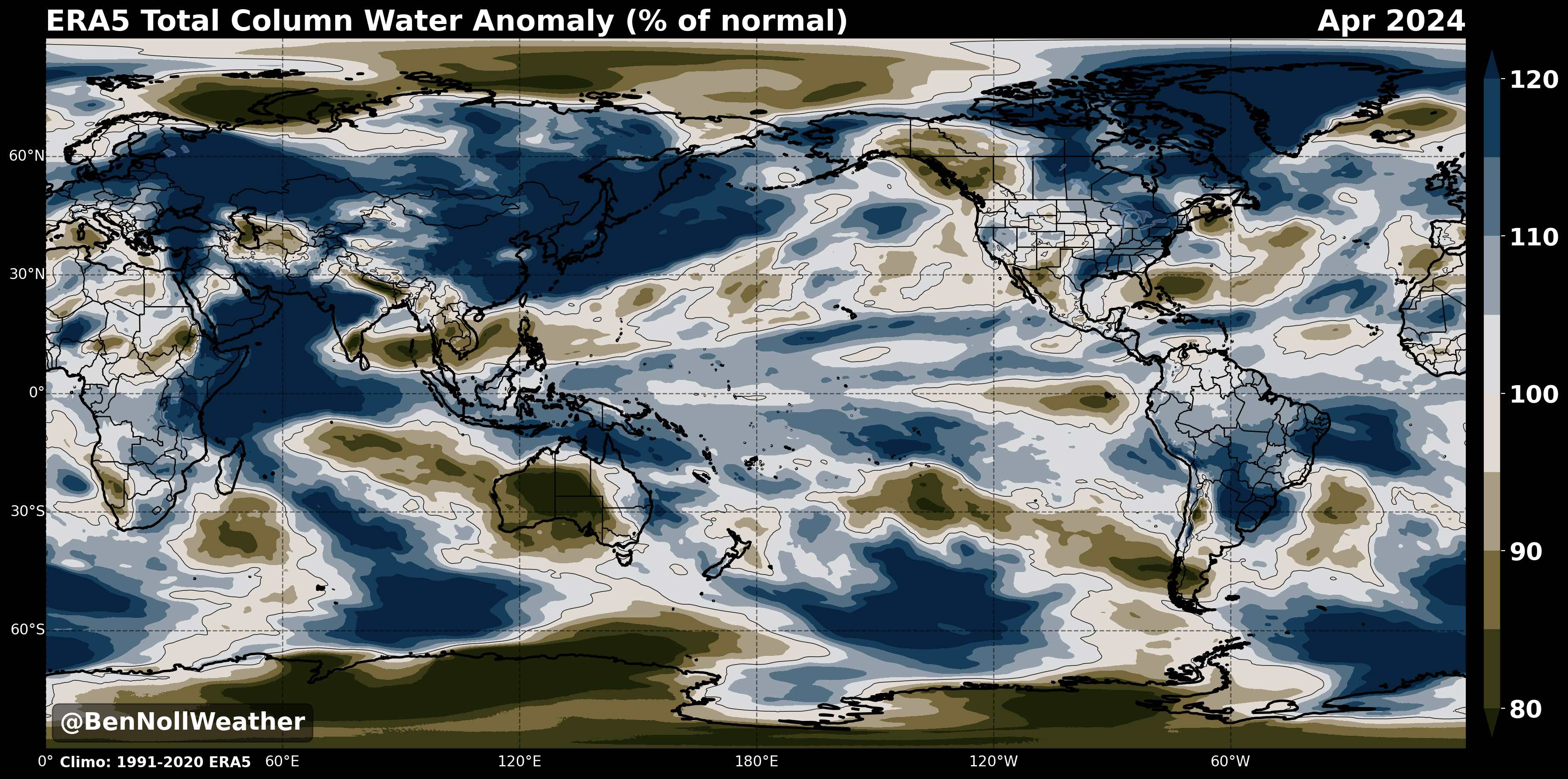Earth just had its most moisture-laden April on record as unrivalled air and ocean temperatures caused atmospheric moisture content to surge across the planet.
It has been known since the 1800s that rising global air temperature allows Earth’s atmosphere to hold more moisture. This phenomenon is explained by the Clausius–Clapeyron relation, which shows that the atmosphere can hold about 7% more moisture for every 1°C of warming.
It comes as little surprise then that record-breaking global air temperatures last month occurred alongside unprecedented atmospheric moisture.
The amount of moisture in Earth’s atmosphere can be represented using a value called the ‘total column water’, which refers to the total amount of water in a vertical column of the atmosphere, including vapour, cloud water and cloud ice. This does not include the moisture that is present as precipitation (e.g. rain and snow).
The global total column water last month was the highest on record for the month of April, beating the previous record from 2016.

Image: Average global atmospheric moisture for April between 1940 and 2024, based on ERA5 data and processed by BenNollWeather
April’s record-breaking atmospheric moisture was caused by unrivalled warmth in the atmosphere, which allowed the air to hold more water, and unprecedented global ocean temperatures, which enhanced evaporation.
The map below shows the distribution of moisture in April 2024, with large areas of above average moisture in both the Southern and Northern Hemispheres.

Image: Total column water anomaly for April 2024, based on ERA5 data and processed by BenNollWeather
One area that had well above average atmospheric moisture in April was the state of Rio Grande do Sol in southern Brazil, which was hit by deadly floods in the first week of May.
There are also a few regions of drier-than-average air on the map above, including central and western Australia. However, when averaged out across the globe, Earth’s atmosphere last month was wetter than any other April on record.






